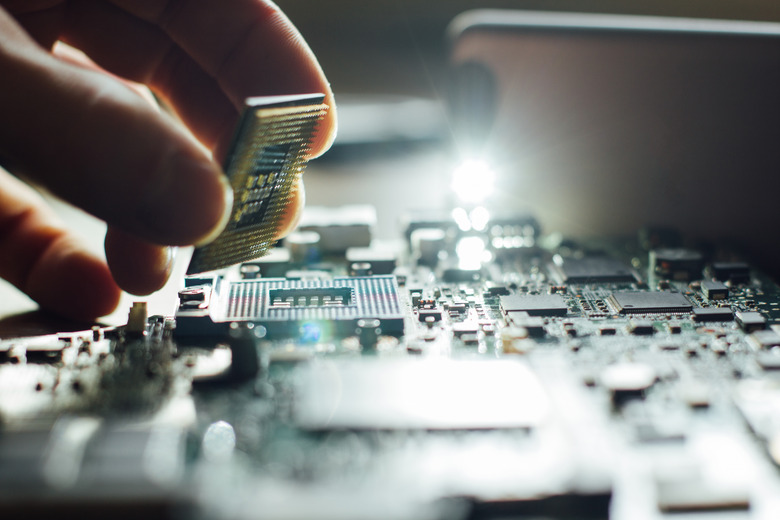How To Calibrate A Thermocouple
A thermocouple can be any junction between two different metals and may be used to measure temperature. Each metal produces a different electrical potential that varies according to changes in temperature. This rate of change is different for each of the metals in the thermocouple, so a thermocouple produces a voltage that increases with temperature. You can calibrate a thermocouple by plotting the thermocouple's voltage-temperature curve.
Step 1
Fill the thermo bath container with water and turn the thermo bath on. Heat the water to 30 degrees Celsius and turn the thermocouple device on. Connect each lead of the multimeter to one end of the thermocouple. This multimeter should be able to measure a voltage of 1 microvolt.
Step 2
Place one junction of the thermocouple into the water and allow the voltage to stabilize. This occurs when the voltage stops fluctuating except for the last digit. Record the stable portion of the voltage from the multimeter.
Step 3
Increase the water temperature to 35 degrees Celsius and record the stable voltage on the multimedia again. Repeat this procedure for each 5-degree increase in temperature from 35 to 60 degrees Celsius.
Step 4
Measure the room temperature and look up the voltage for your thermocouple type at the room's temperature. For example, the voltage for a type K thermocouple at a temperature of 25 degrees Celsius is 1 millivolt. Add this value to each of the voltages you recorded in Steps 2 and 3.
Step 5
Use the curve-fitting method of your choice to find the line that best fits your recorded data. The slope of this line provides the voltage increase for each degree of temperature increase. The voltage on a standard type K thermocouple should increase about 40 microvolts for every degree Celsius increase in temperature.
Things Needed
- Multimeter
- Digital thermometer
- Electrical device with a thermocouple
- Thermo bath
- Thermocouple table
- Water
Cite This Article
MLA
Robinson, Allan. "How To Calibrate A Thermocouple" sciencing.com, https://www.sciencing.com/calibrate-thermocouple-2659/. 13 March 2018.
APA
Robinson, Allan. (2018, March 13). How To Calibrate A Thermocouple. sciencing.com. Retrieved from https://www.sciencing.com/calibrate-thermocouple-2659/
Chicago
Robinson, Allan. How To Calibrate A Thermocouple last modified March 24, 2022. https://www.sciencing.com/calibrate-thermocouple-2659/
